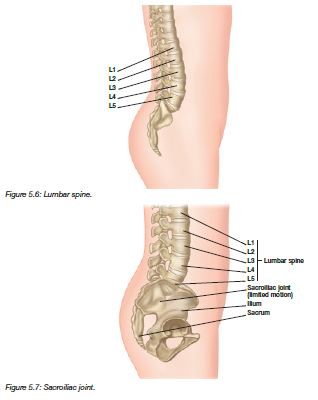Positive Health Online
Your Country

Lower Back Pain
listed in back pain, originally published in issue 225 - October 2015
Most people with back problems, and back pain suffer in the Lumbar region. Lower back pain has many causes but the vast majority are caused through bad posture and overuse conditions / injuries, generally brought about by a lack of physical exercise and not just in the gym; changes caused by our lifestyles and working environments over the decades, together with the increased use of laptops, tablets, games machines, and last but by no means least - mobile phones.

The positions people assume when using these Gadgets is usually poor. The bad posture adopted by so many does not only bring about painful conditions such as Lower Back pain, but also affect the body’s ability to function properly and repair itself. There is a very real possibility in the not too distant future, of an increase in upper and lower body problems especially as children and young adults of today reach maturity.
Most of us are doing far too much sitting down. We were not designed for immobility - we were designed for movement. Sitting down naturally puts a great deal of strain through the lower body, not only in the back but also through the pelvic area. And through lack of activity, much of population have muscles not fit for purpose, which exacerbates the problems.
Even if we are not using the Gadgets regularly, we sit when we eat, drive a vehicle, at work or school sitting at a desk, rid a bike, whilst watching television and so on. The design of a lot of today’s furniture is also a contributing factor with the designs more about the look, than whether it gives the support required to aid correct posture.
But laying all the problems at technologies door would be wrong. Natural events such as wear and tear/degeneration caused by the ageing process, pregnancy and child birth, can also create problems for this area, with the changes in hormones; the release of the hormone relaxin, lower back and pelvic problems are common. Also medical interventions such as surgery can have a big effect on the body, and when procedures such as Caesarean Section, hysterectomy, appendectomy, hernia repair, for example, are carried out, the resulting damage and changes to the fascia of the body can be considerable, and not always acknowledged or treated.
As well as surgery, other traumas, such as those caused by an accident (falling, or motor vehicle collision), or through a sporting activity, heavy manual labour (causing overuse injuries) etc. also effecting the fascia are added to the list, it is not really surprising that this area of the body can be affected.
We are also now finding that the medical profession does not seem to bring into the equation the body’s Soft Tissues, when problems arise. They seem to have forgotten how much of the body is made up to soft tissue. Some areas of the medical profession do not even remember the names of the main muscles. With cutbacks in the NHS, especially in aftercare, more people are turning to other types of therapies for assistance.
The lumbar spine and sacroiliac (SI) joint. Taken from the Soft Tissue Release Handbook
Sanderson/Odell, 2012, courtesy Lotus Publishing, Chichester.
The construction of the Lower body is very intricate and leaves it (as with other areas of the body such as the Glenohumeral Joint, and Knee) susceptible to injury, wear and tear and overuse. Unfortunately, it is also an area that has muscles/fascia that can also inhibit the nerves more readily than other areas, causing considerable pain and discomfort, without any obvious outward signs of trauma or misuse.
The transverse aspects of the lumbar vertebrae and the sacroiliac joint (SIJ)’s lateral aspects, are the attachments points (or coat hangers is if you like) for the numerous layers of muscles in this area.
The Lumbar Spine is made up of 5 fascial joints, and as with the rest of the back, have discs between them. The disc’s primary function is to act as shock absorbers and enable movement without causing damage to their structure or the nerves running through the Spine.
When you see how many layers of Soft Tissue there are in the Lumbar Spine area, and the number of nerve outlets (including the sciatic nerve) in this region, it really isn’t difficult to realize how easy it is for alignment problems, soft tissue imbalances, overuse injuries, and damage to soft tissue to occur and for pain to be the result of these.

Treatment for back problems from Soft Tissue Therapists (including Sports/ Deep Tissue/Clinical & Remedial Massage Therapists) has proven to be extremely effective and beneficial to back pain suffers. These Therapists work primarily with the body’s fascia and muscles, and by releasing the adhesions and lengthening the shortened tissues that can occur when the structure is not as it should be. Acupuncture, Chiropractic and Osteopathic treatments have also been shown to be effective, depending on the reason for the condition, in realigning the structure, but they do not address the Soft Tissues issues. The ability to carry out a thorough Postural Analysis before treating is essential if the therapists are to treat successfully.
Ultimately it needs the general population to be aware of their posture, to active and watch their posture. It also requires that schools, offices, factories and other work places try to make sure that they supply the necessary equipment to aid the maintenance of good posture.
Comments:
-
No Article Comments available
